Praise For Online Teaching: Tools and Techniques to Achieve Success with Learners
Online teaching and learning are becoming more prevalent in public schools and institutions of higher education. A resource containing best practices for online teaching techniques would be invaluable to both novice and experienced educators. Stony Evans , library media specialist, Lakeside High School, Hot Springs, AK
I highly recommend Online Teaching as a key contemporary resource for all aspiring and current teachers in K12 and higher education institutions. Since I began teaching university-level online courses in 2005, I have been searching for such a comprehensive resource that provides valuable insight for online teaching that covers both theoretical approaches and useful best practices examples for immediate implementation. This book does both well and in a reader-friendly manner, thus, facilitating the reduction of the trepidation that all levels face with online teaching and learning. As a former superintendent of New York schools and a current university professor, I encourage the use of this book by teachers and administrators at all levels of the instructional spectrum so that they may better envision the appropriateness and effectiveness of online programs and, subsequently, may develop a more comprehensive orientation to teaching and learning in the twenty-first century. Dr. Walter S. Polka , PhD, professor of professional programs, Niagara University, NY
This exceptional text supports the needs of academic communitiesKindergarten through post-secondary educationby successfully outlining the needs of learners within the online learning environment. This text offers best practice support for those instructors who are transitioning into the online instructional realm, by explaining the nuances, engagement, self-regulatory effort, communicative endeavors, and techniques that play a necessary part in any for successful blended or online learning environment. The tools, techniques, and tips for online instruction do not merely offer snapshots of students learning online, but also delve into their differentiated and idiosyncratic engagements with the subject matter. Caroline M. Crawford, PhD, associate professor of instructional design and technology, University of Houston-Clear Lake, TX
Online Teaching
Online Teaching
Tools and Techniques to Achieve Success with Learners
Mike Casey, Erin Shaw, Jeff Whittingham, and Nancy Gallavan
Rowman & Littlefield
Lanham Boulder New York London
Published by Rowman & Littlefield
An imprint of The Rowman & Littlefield Publishing Group, Inc.
4501 Forbes Boulevard, Suite 200, Lanham, Maryland 20706
www.rowman.com
Unit A, Whitacre Mews, 2634 Stannary Street, London SE11 4AB
Copyright 2018 by Mike Casey, Jeff Whittingham, Erin Shaw, and Nancy Gallavan
All rights reserved . No part of this book may be reproduced in any form or by any electronic or mechanical means, including information storage and retrieval systems, without written permission from the publisher, except by a reviewer who may quote passages in a review.
British Library Cataloguing in Publication Information Available
Library of Congress Cataloging-in-Publication Data
Names: Casey, K. Michael, author. | Shaw, Erin, author. | Whittingham, Jeff, author. | Gallavan, Nancy P., author.
Title: Online teaching : tools and techniques to achieve success with learners / Mike Casey, Erin Shaw, Jeff Whittingham, and Nancy Gallavan.
Description: Lanham, Maryland : Rowman & Littlefield, [2018]
Identifiers: LCCN 2018015085 (print) | LCCN 2018019663 (ebook) | ISBN 9781475839371 (electronic) | ISBN 9781475839357 (cloth : alk. paper) | ISBN 9781475839364 (pbk. : alk. paper)
Subjects: LCSH: Web-based instructionStudy and teaching. | Educational technologyStudy and teaching. | Education, HigherComputer-assisted instruction.
Classification: LCC LB1044.87 (ebook) | LCC LB1044.87 .C38 2018 (print) | DDC 371.33/44678dc23
LC record available at https://lccn.loc.gov/2018015085
 The paper used in this publication meets the minimum requirements of American National Standard for Information SciencesPermanence of Paper for Printed Library Materials, ANSI/NISO Z39.48-1992.
The paper used in this publication meets the minimum requirements of American National Standard for Information SciencesPermanence of Paper for Printed Library Materials, ANSI/NISO Z39.48-1992.
Printed in the United States of America
Preface
Online education has grown at an ever-increasing rate since the internet gained wide access in the early 1990s. Since that time, instructors have worked to make the transition from face-to-face to online instruction. Some have done it successfully and others have struggled. While universities were the first to harness the internet as an access point for students, online education is now available at the high school level as well as in the corporate world.
No matter the purpose for online instruction, there has and will continue to be a need for high-quality instruction for online teachers. This is true of the beginning, novice, and more experienced online teacher alike. It is important to realize that good teaching is good teaching whether in a physical classroom or in one of many online formats. This book seeks to direct online teachers to those practices that represent good teaching.
The primary purpose of this book is to provide practical advice for beginning and novice online instructors who wish to establish and enhance their online teaching and improve online learning for their students. However, the best practices described here may also be of use by more experienced educators seeking to revitalize their online teaching. The book is meant to be an accessible reference for improving online teaching and learning regardless of teaching background.
There are few greater challenges for a teacher than developing and teaching your first online course. Even the most excellent traditional classroom teachers can feel overwhelmed by this task. This book will give you the tools and techniques necessary to meet the challenge of achieving success with your online learners.
Chapter 1
Online Teaching and Learning
How This Book Will Help You Become a Better Online Instructor
Dr. John Michaels was feeling positive about his first year of teaching in higher education. As a former junior high language arts teacher, he had been able to make a relatively smooth transition into the literacy education program at a nearby university. As he was sitting in his office on the last day of finals week he reflected, No matter what level, teaching is teaching. At the height of his feelings of personal gratification, his department chair stepped into his office.
It wasnt long before Johns elation transformed into severe anxiety. His department chair informed him that there was a new section of Literacy across the Curriculum that needed to be developed and taught online the next fall. John had never considered teaching an online class; now he would be responsible for one in just a few short months, and he did not know where to begin.
What Is Online Teaching and Learning?
Online teaching and learning is education that takes place through the internet. It can be divided into two categories: synchronous and asynchronous. Synchronous instruction is defined as instruction and learning that occurs in real time via the internet, while asynchronous instruction and learning occurs at any time via the internet. One is not better than the other. Instructors determine which type of instruction best fits their teaching methodologies and teaching style.
There are advantages and disadvantages to every endeavor, and online teaching is no different. One of the primary advantages of online teaching is the student-centered nature of online teaching. While students may attend a face-to-face class and leave with only minimal interaction, online learning requires active participation in the learning process, both with fellow students and with the professor. It is possible for students to attend a face-to-face class for an entire semester and choose to not interact with the instructor. That is rarely possible in an effectively structured online environment.
Next page
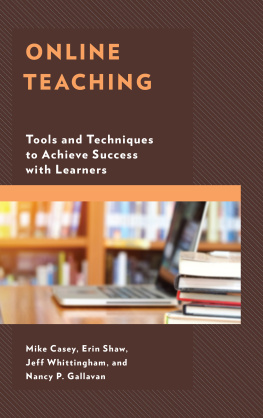

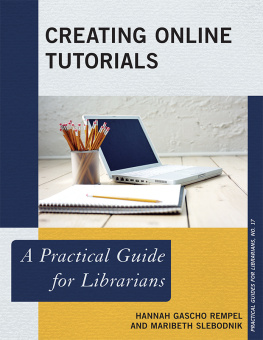
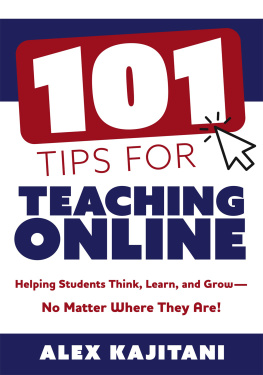
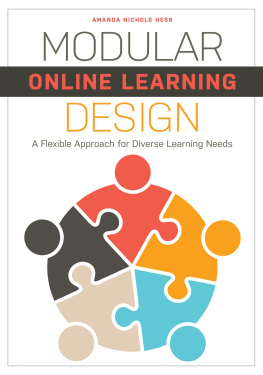

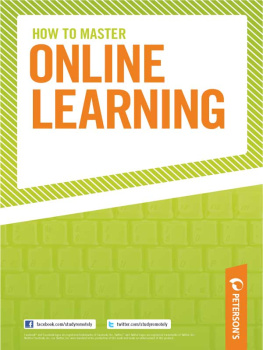
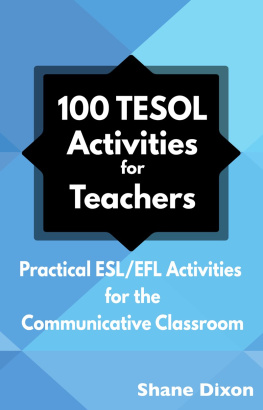
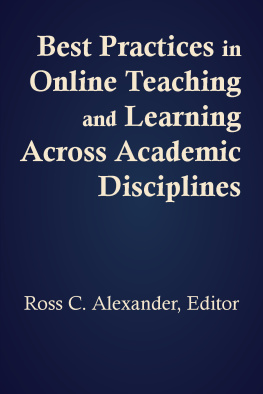
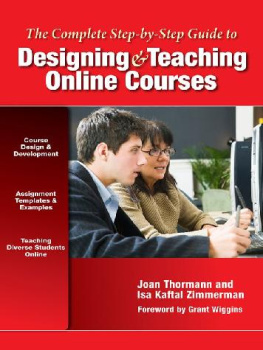
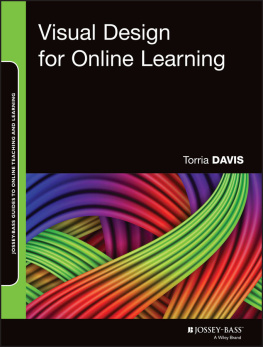
 The paper used in this publication meets the minimum requirements of American National Standard for Information SciencesPermanence of Paper for Printed Library Materials, ANSI/NISO Z39.48-1992.
The paper used in this publication meets the minimum requirements of American National Standard for Information SciencesPermanence of Paper for Printed Library Materials, ANSI/NISO Z39.48-1992.